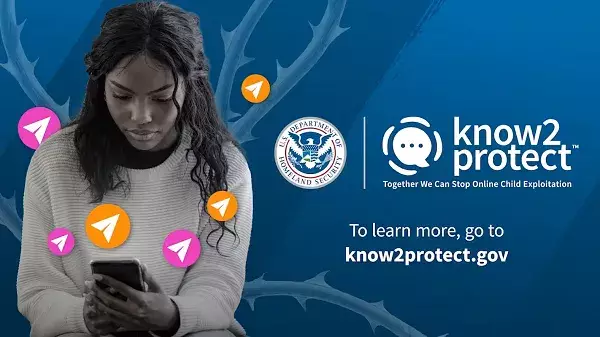In the digital era, the safety of our youth online has become an urgent issue. Snapchat, in collaboration with the U.S. Department of Homeland Security’s “Know2Protect” initiative, is taking a bold stance against child sexual exploitation and abuse (CSEA). Launched in April of the previous year, the Know2Protect program aims to raise awareness among younger generations regarding the lurking dangers they may face while interacting online. Snap, a pioneer participant in this proactive effort, has dedicated the past year to implementing protective features within the app and enhancing user engagement through awareness initiatives.
Empowerment is not just about education; it is also about action. By fostering an environment where young users are encouraged to recognize and report exploitative behaviors, Snap aims to create a safer online space. Yet, a recent survey conducted by Snap indicates that the journey is far from over. The struggles persist, as aged statistics uncover both alarming trends and marginal improvements in the behaviors of teens navigating the treacherous waters of online communication.
Unpacking the Data: A Mixed Bag of Progress
Snap’s findings paint a challenging picture. Shockingly, 24% of teenagers admit to sharing intimate images—an unsettling figure that has not budged since last year. Meanwhile, 33% reported experiences of online grooming, with a slight decrease, indicating that while some strides might be made, the core issue remains prevalent. Further complicating the narrative, 35% of participants revealed they had encountered catfishing, a figure that has only dropped slightly, by one percentage point.
Among those who shared intimate content, more than half fell prey to deceptive identities, underscoring the need for ongoing vigilance. The concern around catfishing has further escalated, jumping by four percentage points, demonstrating the evolving landscape of threats online. Perhaps the most heart-wrenching statistic is that 50% of teens who shared intimate images expressed a sense of losing control over those materials once they were released, which becomes even more pronounced among younger users. Approximately 63% of these teens reported losing control of their images—a staggering 13-point increase since the last assessment in October 2024.
These numbers are not just statistics; they symbolize real experiences and roll into a bigger narrative about the need for sustained intervention. The orchestra of challenges is loud and unsettling, yet Snap’s commitment to change is palpable.
Awareness Rising: A Silver Lining
While the data concerning online exploitation remains dire, there’s a glimmer of hope when considering the impact of the Know2Protect program on awareness levels. Recent reports indicate a surge in familiarity with the initiative, with nearly 28% of surveyed teens recognizing the campaign—an impressive 17-point improvement since October 2024. Furthermore, approximately 46% could articulate campaign elements, marking a significant increase from one-third just six months prior.
A notable takeaway is that around 89% expressed that the campaign motivated them to seek additional information on online safety, demonstrating a growing interest in protective measures. This is not just encouraging; it is essential. Awareness can often serve as the first barrier against exploitation, creating a more informed generation capable of making safer choices.
Innovative Measures: Snap’s Proactive Approach
Snap is complementing educational efforts with the implementation of robust protective features such as PhotoDNA, which uses Google’s CSAI Match technology to identify and eliminate known illegal images. The integration of such tools signals Snap’s serious commitment to safety, going beyond mere PR gestures. Furthermore, the company continues to enhance its Family Center suite, which provides parents with essential tools to monitor and guide their children’s online interactions.
The evolution of these measures is not merely a response to rising statistics but a proactive stance in what can often feel like an uphill battle. As technology advances, so too do the threats that youth face online. AI-driven deep fakes and other emerging risks highlight the necessity for continuous development in protective strategies.
In a world where online interactions are a vital part of life, Snap’s ongoing investments in safety measures signal a progressive approach towards managing the inherent risks associated with digital communication, especially for its younger audience. These efforts show not just a concern for user safety but a pivotal role in shaping responsible digital citizenship among teenagers.

